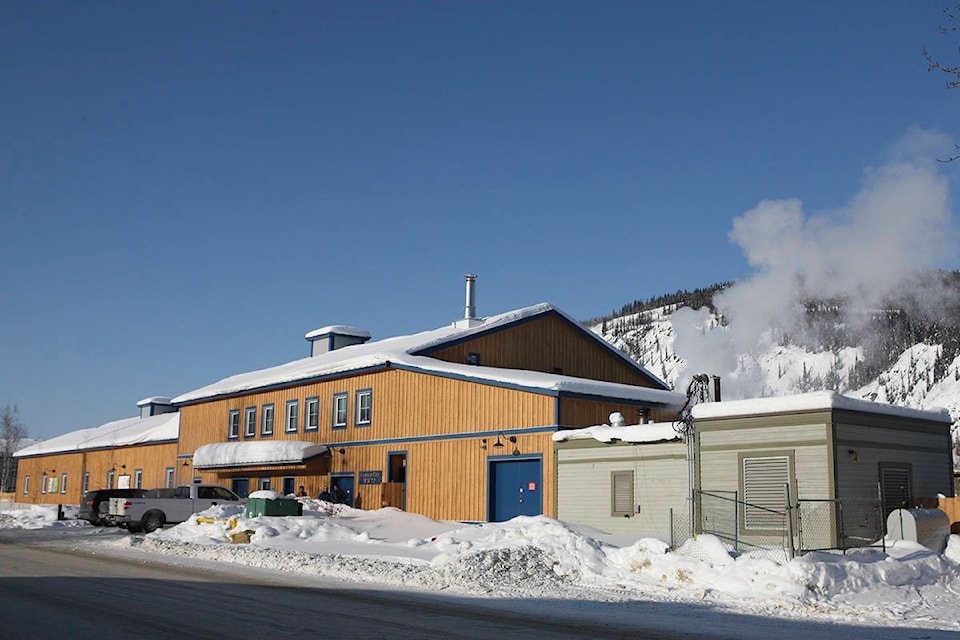It’s official, the Dawson wastewater treatment facility is a $35 million monument to government boondoggles.
This week the Yukon government announced it was throwing in the towel on the plant. Only seven years after it opened, officials have been forced to start planning for something new.
When the premier was in opposition, and as such was more prone to snappy quips, he called the Dawson facility the WTF.
The desire to swear is understandable. The thing never really worked. Those in charge couldn’t get the water coming out to meet the standards of their licence year-round.
Even now, after millions of dollars in repairs, it barely functions, according to the government. The nearly million-dollar price tag to operate the facility annually is about four times what it was supposed to cost. It’s not sustainable.
There’s no time left now to try to polish that turd but there were multiple points in the facility’s saga where cooler heads could have stepped in and prevented all this money from being flushed away.
In 2008, Dawson’s citizens voted overwhelmingly against plans to put a standard sewage lagoon near the entrance to the community. Politicians likely felt considerable pressure not to go against their constituents but it’s hard to believe there were no alternatives between the nixed lagoon location and the untested “deep-shaft” monster that was supposed to clean Dawson’s water in a system underground.
If anyone had picked up this newspaper before they picked up construction equipment, they would have learned that Corix, the company in charge, had never actually built one of these things before.
Yukon officials at the time refused to acknowledge that being a multi-million dollar guinea pig might not be the best idea.
Corix partnered with a second company that had more experience with the technology and those in charge at the Yukon government (including some who still work for the Department of Highways and Public Works) repeatedly insisted that Yukoners had nothing to worry about.
Media, at the time were presented with a list of 64 other deep-shaft plants, but only four were in Canada.
Of those, only one was in operation at the time.
Yukon News reporter Genesee Keevil listed plant after plant in her reporting that had either been abandoned, had ballooning operating costs or struggled to meet environmental standards.
Sound familiar? These are all problems Dawson has had to deal with. Anyone who claims Dawson’s issues were a surprise was not paying attention.
Keevil’s reporting alone should have been enough for someone to take a second look at the plan.
For years, as the Dawson facility failed summer after summer of tests, no one from the government could provide even a semi-coherent answer for what was causing the problems.
Finally, this week, Community Services Minister John Streicker admitted that this type of plant wasn’t compatible with Yukon’s climate. If the government had chosen technology with a track record in the North, we wouldn’t be in this situation.
Someone who is probably muttering “I told you so” these days is Peter Densmore, the owner of Ketza Construction.
Ketza was the only other company to bid on the Dawson project. It proposed a $16.5-million biological treatment plant that would have used micro-organisms to digest the contents of sewage.
Densmore reportedly warned that Corix’s more expensive project would end up being a “white elephant.”
He challenged the government’s decision to give the contract to Corix.
The bid challenge committee found no evidence to support Densmore’s claims that the government had misbehaved in awarding the contract to Corix.
It did provide a rather ominous warning. It said that the contract’s evaluation team — made up of representatives from the Yukon government and town of Dawson — “appeared to lack the necessary depth of technical expertise.”
On top of that, “there was the appearance that the evaluation committee relied too heavily on only a single technical advisor,” and “there should have been more ‘voting’ evaluators with a technical background specific to the project.”
The government denied there was a problem and kept on truckin’.
So here we are, exactly where many people could have predicted we would be.
In truth the only service that Dawson’s WTF has provided to the territorial government is that taking over ownership (when the City of Dawson refused) allowed the Yukon Party to avoid a deficit on paper ahead of an election.
A new facility won’t be built in Dawson until 2026, meaning the Yukon will continue to pay nearly a million dollars or more in operating costs each year.
Meanwhile, since the system technically works, even if just barely, the government can’t sue Corix to get the majority of its money back.
The best thing the facility has to offer now is to be a reminder of what happens when good sense is drowned out by other crap.
(AJ)
